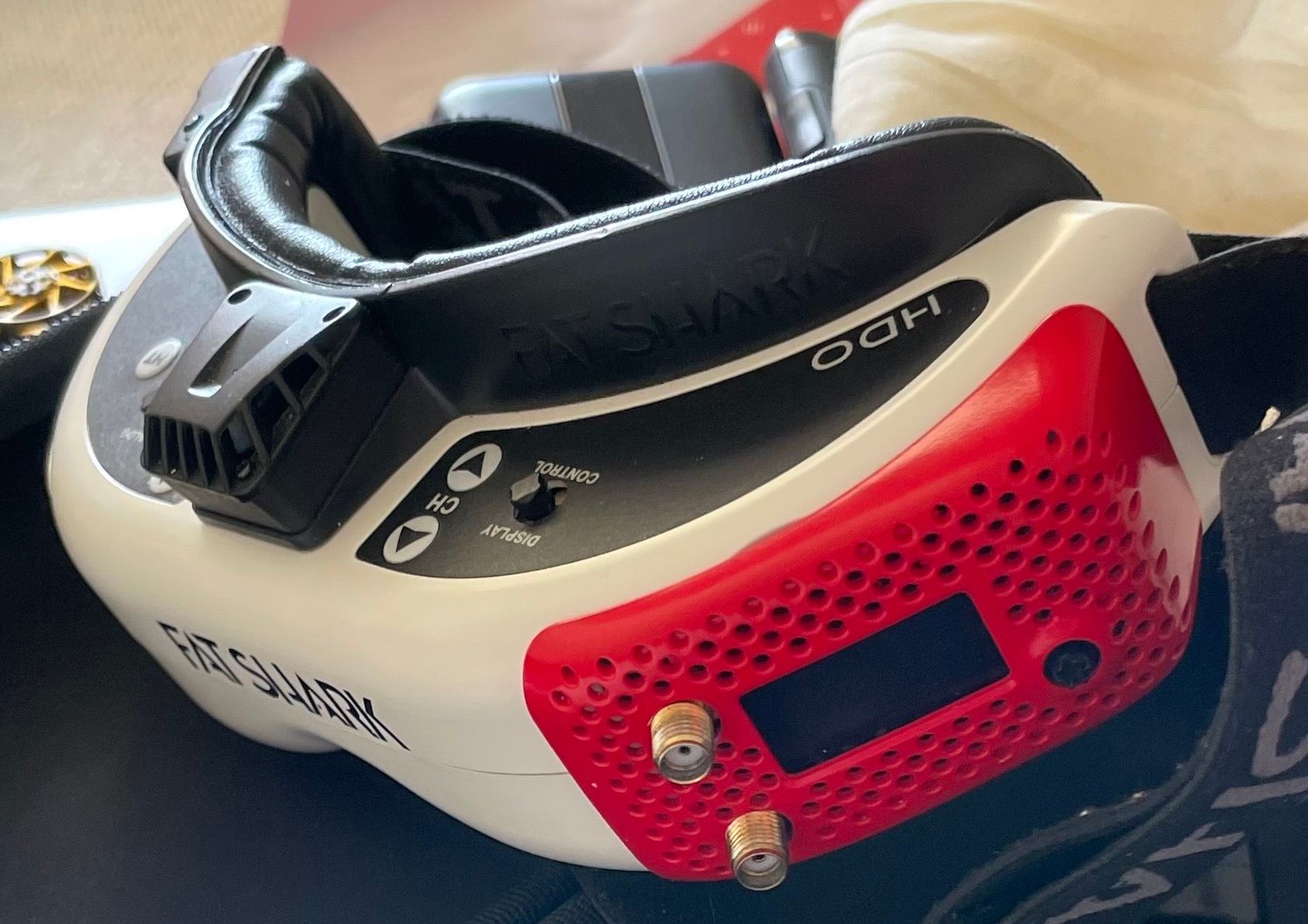New Goggles

So yes, I've been missing a bit lately, just a lot of personal stuff going on, I'm exhausted! But on a happier note, I have some new (second hand) goggles for my drone.
Managed to get a pretty good deal on some Fatshark HDO goggles with an ImmersionRC RapidFire module.
So what does that all mean? Well, Fatshark have been the goto standard for drones for a LONG time, and while lately a number of other companies have caught up, they're still right up there in terms of quality and support. The HDO goggles of theirs are the best of the previous generation of goggles. OLED screens (so nice and bright) and a 37 degree field of view. Also they're 4:3 ratio rather than the 16:9 of my old Aomway Commanders, so it feels a lot more immersive.
As for the ImmersionRC RapidFire module, well, ImmersionRC are one of those companies that have been around for the majority of the multirotor hobby, so they know what people want. As for RapidFire, it's the best of the best when it comes to analog receiver modules. Feel free to skip to the video below if you don't want to know the technical side from here.
So what is RapidFire, first we have to jump into how video receivers work.
A basic receiver gets a signal from the antenna and outputs it on an analog pin. Very simple, and there's even a reasonably cheap chip you can buy that does exactly that - the RX5803.
Next up is adding an extra antenna, this theoretically makes your receiver get a cleaner signal, in reality, it doesn't do much.
After that, we get into smart stuff - diversity. This has two RX5803 (or similar) chips in it, and will pick the one with the strongest signal (also known as RSSI). How us FPV pilots typically use this is to put an omni-directional antenna on one input, and a directional antenna (such as a patch) on the other. The directional antenna boosts the signal at the expense of only covering a certain angle in front of it. The narrower the "beam", the larger the boost. Then we use the omni-directional to fill in the gaps (such as flying behind yourself).
Finally we get to RapidFire (also available in other brands such as TBS Fusion and Skyzone SteadyView). Once again, we have two chips in it, much like diversity, however, rather than picking the strongest of each, it picks the best bits from within the frame, and reconstructs it to make the output much clearer when dealing with static (which can come from range, bounced signals, various forms of interference, etc).
With RapidFire, unless you're flying long range (in which case you'll use two directional antennas), you typically use two omni-directional antennas pointed in different orientations, one up, and one forwards. However, there's nothing stopping you from having one omni, and one directional (and this is how I did my first test)
So finally we get to my initial test, and yep, I'm blown away. Where I used to get a lot of signal breakup, it's still totally clear. It also gives an audible beep when it's only getting signal on one antenna, so a good indication you need to turn your head a different direction.
